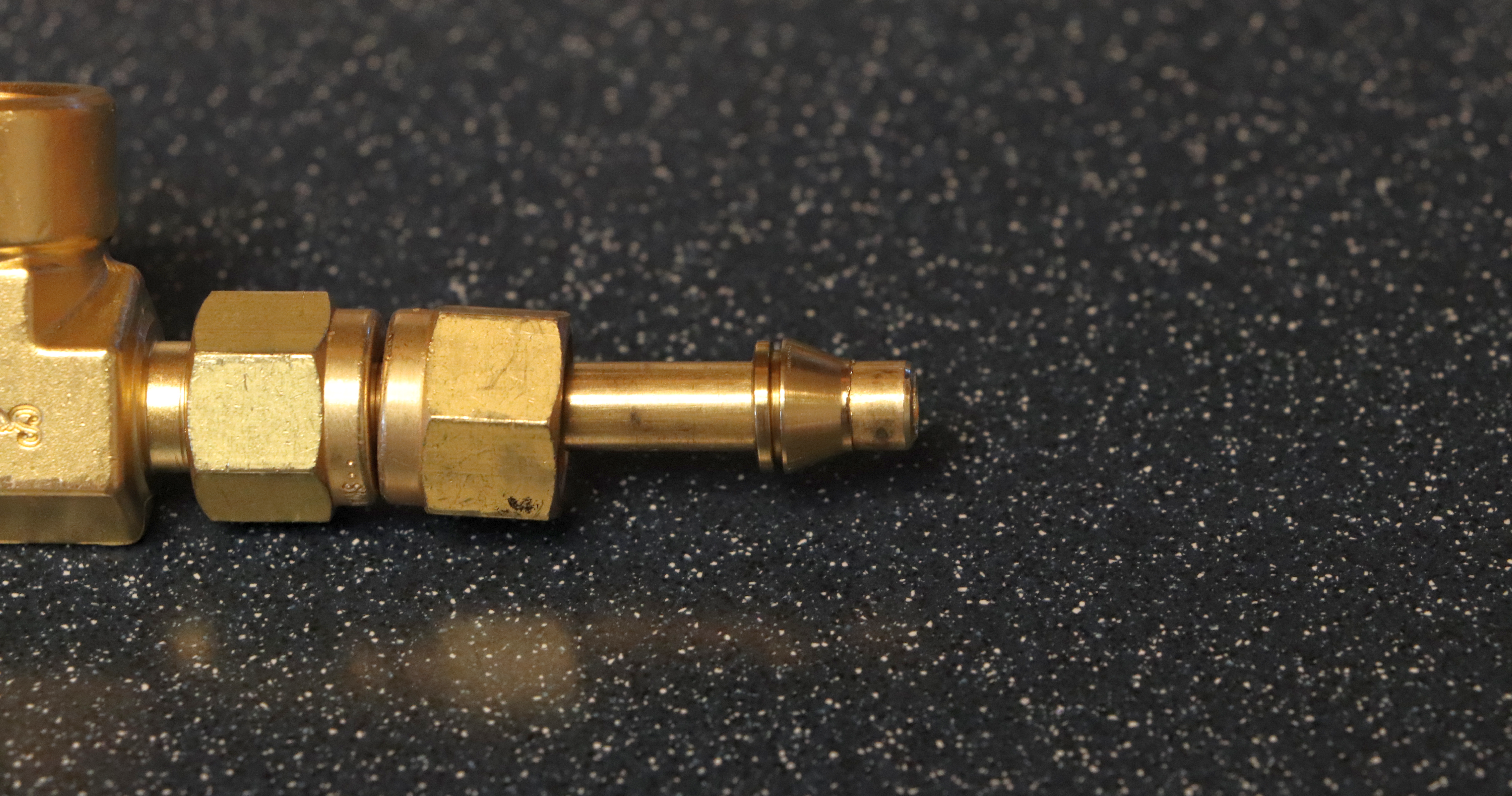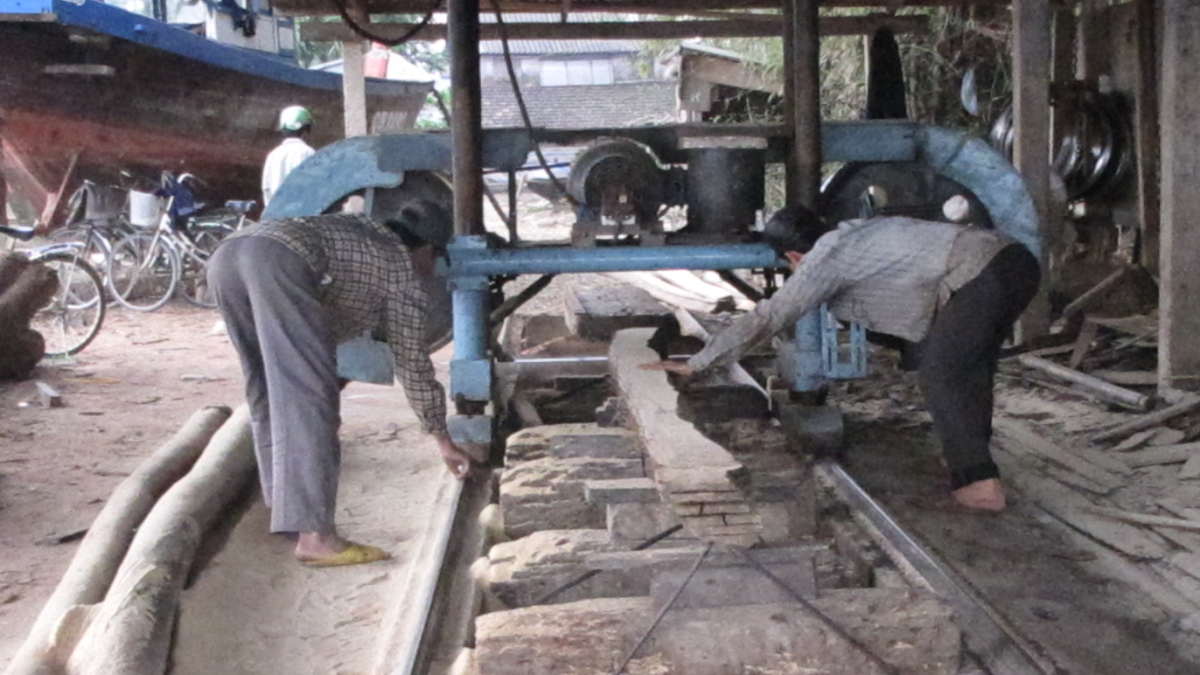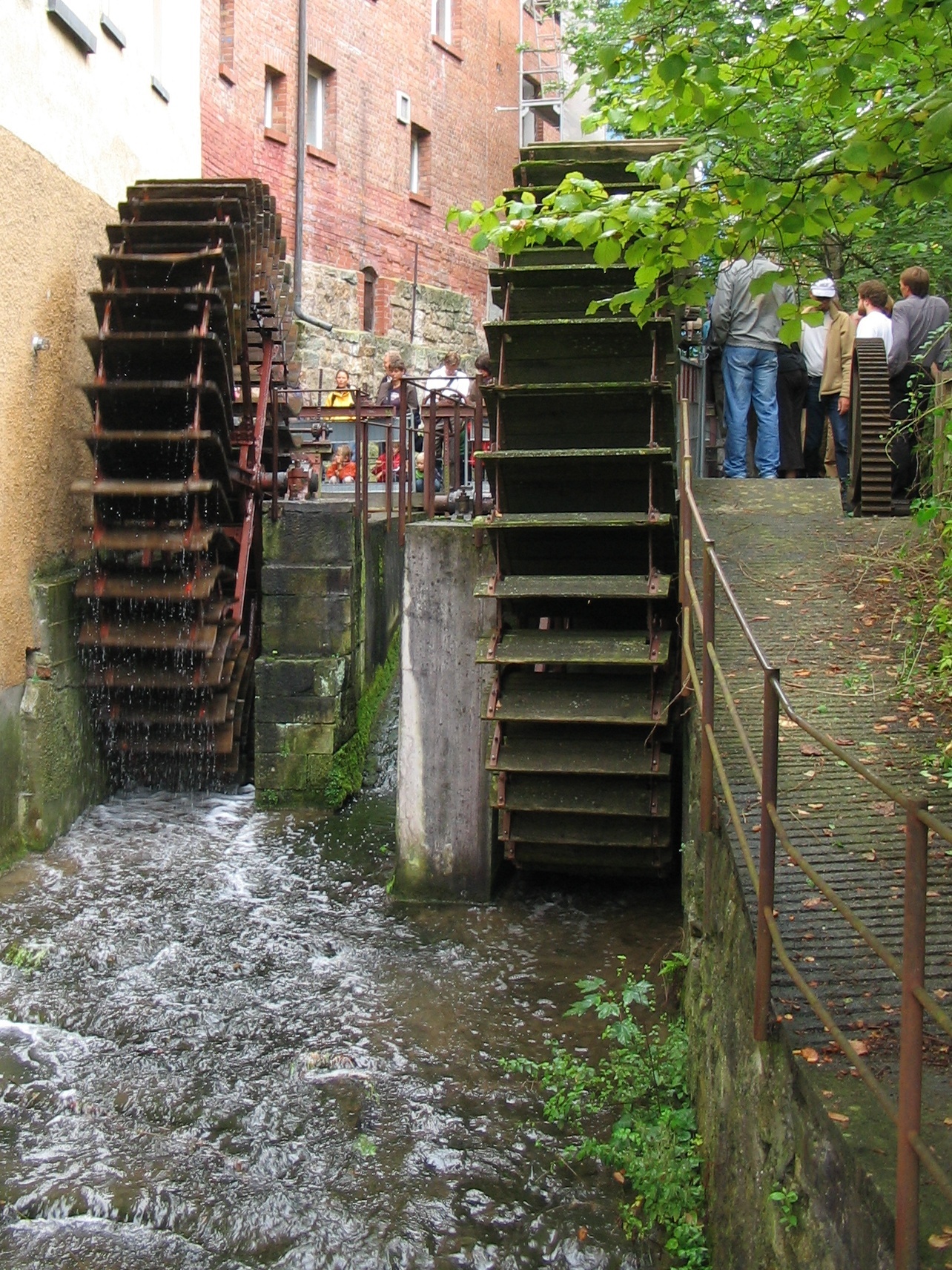|
Swage
Swaging () is a forging process in which the dimensions of an item are altered using dies into which the item is forced. Swaging is usually a cold working process, but also may be hot worked. The term swage may apply to the process (verb) or to a die or tool (noun) used in that process. Origin The term "swage" comes from the Old French term , meaning "decorative groove" or "ornamental moulding". Swages were originally tools used by blacksmiths to form metal into various shapes too intricate to make with a hammer alone. These have handles for holding or pegs for attaching to an anvil, and often a flat head for striking with a hammer. Swage blocks are anvil-like dies with various shapes forged into them, which are also used for forming metal. Swages called " fullers" are specific to making grooves in swords and knives. ''Swage'' is most often pronounced ( AHD format: swāj). Another (less common) pronunciation sometimes heard in the metalworking industries is (AHD forma ... [...More Info...] [...Related Items...] OR: [Wikipedia] [Google] [Baidu] |
Swage Block
A swage block (or swager block) is a large, heavy block of cast iron or steel used in smithing, with variously-sized holes in its face and usually with forms on the sides. The through-holes are of various shapes and sizes and are used to hold, support or back up a hot bar of metal for further shaping. Operations performed on a swage block include but are not limited to bending, cutting, punching and forming. The sides are scalloped to present formed shapes for forging operations. Shapes are for example the curve of a wheel, which could be used to finish a wheel rim, using a suitable hammer. Other shapes, such as the half hexagon, can be used with a matching top swage to form a hexagonal cross-section on a bar. The various shapes around the edge of the swage block all have corresponding shapes in the form of top swages to shape iron bar into various sections. The image shows a 15-inch, square swage block with various semi-circular, hexagonal, and square shapes around its perimete ... [...More Info...] [...Related Items...] OR: [Wikipedia] [Google] [Baidu] |
Swagelok
Swagelok Company is a $2 billion privately held developer of fluid system products, assemblies, and services for the oil and gas, chemical and petrochemical, semiconductor, and transportation industries. Headquartered in Solon, Ohio, U.S.A., Swagelok operates through approximately 200 sales and service centers in 70 countries, and employs over 5,700 associates at 20 manufacturing facilities and five global technology centers. History Fred A. Lennon and Cullen B. Crawford founded Crawford Fitting Company in Cleveland Cleveland is a city in the U.S. state of Ohio and the county seat of Cuyahoga County. Located along the southern shore of Lake Erie, it is situated across the Canada–U.S. maritime border and approximately west of the Ohio-Pennsylvania st ..., Ohio, in July 1947 to manufacture the Swagelok tube fitting, which used a two-ferrule design to “swage” or form the tube and lock it into place. One year later, Lennon bought out Crawford and continued to grow ... [...More Info...] [...Related Items...] OR: [Wikipedia] [Google] [Baidu] |
Fuller (weapon)
A fuller is a rounded or beveled longitudinal groove or slot along the flat side of a blade (e.g., a sword, knife, or bayonet) that serves to both lighten and stiffen the blade, when considering its reduced weight. Cutting or grinding a fuller into an existing blade will decrease its absolute stiffness due to the removal of material, but much of the strength remains due to the geometry of its shape. When the groove is forged into the blade, it achieves a similar reduction in weight with a relatively small reduction in strength without the wasted material produced by grinding. When impressed during forging, it may be made using a blacksmithing tool that is also called a fuller, a form of spring swage. When combined with optimal} distal tapers, heat treatment and blade tempering, a fullered blade can be 20% to 35% lighter than a non-fullered blade. The ridges and groove created by the fuller are comparable to an I-beam's flanges and web; this shape aims to optimize the strength ... [...More Info...] [...Related Items...] OR: [Wikipedia] [Google] [Baidu] |
Wire Rope
Steel wire rope (right hand lang lay) Wire rope is composed of as few as two solid, metal wires twisted into a helix that forms a composite ''rope'', in a pattern known as ''laid rope''. Larger diameter wire rope consists of multiple strands of such laid rope in a pattern known as ''cable laid''. Manufactured using an industrial machine known as a strander, the wires are fed through a series of barrels and spun into their final composite orientation. In stricter senses, the term ''wire rope'' refers to a diameter larger than , with smaller gauges designated cable or cords. Initially wrought iron wires were used, but today steel is the main material used for wire ropes. Historically, wire rope evolved from wrought iron chains, which had a record of mechanical failure. While flaws in chain links or solid steel bars can lead to catastrophic failure A catastrophic failure is a sudden and total failure from which recovery is impossible. Catastrophic failures often lead to cascadi ... [...More Info...] [...Related Items...] OR: [Wikipedia] [Google] [Baidu] |
Anvil
An anvil is a metalworking tool consisting of a large block of metal (usually Forging, forged or Steel casting, cast steel), with a flattened top surface, upon which another object is struck (or "worked"). Anvils are massive because the higher their inertia, the more efficiently they cause the energy of striking tools to be transferred to the work piece. In most cases the anvil is used as a forge, forging tool. Before the advent of modern welding technology, it was the primary tool of metal workers. The great majority of modern anvils are made of cast steel that has been heat treated by either Case-hardening, flame or Induction_hardening, electric induction. Inexpensive anvils have been made of cast iron and low-quality steel, but are considered unsuitable for serious use, as they deform and lack rebound when struck. The largest single piece tool steel anvil that is heat treated is 1600 pounds. This anvil was made in 2023 by Oak Lawn Blacksmith. There are larger anvils tha ... [...More Info...] [...Related Items...] OR: [Wikipedia] [Google] [Baidu] |
Bullet
A bullet is a kinetic projectile, a component of firearm ammunition that is shot from a gun barrel. They are made of a variety of materials, such as copper, lead, steel, polymer, rubber and even wax; and are made in various shapes and constructions (depending on the intended applications), including specialized functions such as hunting, target shooting, training, and combat. Bullets are often tapered, making them more aerodynamic. Bullet size is expressed by weight and diameter (referred to as "caliber") in both imperial and metric measurement systems. Bullets do not normally contain explosives but strike or damage the intended target by transferring kinetic energy upon impact and penetration. Description The term ''bullet'' is from Early French, originating as the diminutive of the word ''boulle'' (''boullet''), which means "small ball". Bullets are available singly (as in muzzle-loading and cap and ball firearms) but are more often packaged with propellant as a cartri ... [...More Info...] [...Related Items...] OR: [Wikipedia] [Google] [Baidu] |
Forging
Forging is a manufacturing process involving the shaping of metal using localized compression (physics), compressive forces. The blows are delivered with a hammer (often a power hammer) or a die (manufacturing), die. Forging is often classified according to the temperature at which it is performed: cold forging (a type of cold working), warm forging, or hot forging (a type of hot working). For the latter two, the metal is heated, usually in a forge. Forged parts can range in weight from less than a kilogram to hundreds of metric tons.Degarmo, p. 389 Forging has been done by metalsmith, smiths for millennia; the traditional products were kitchenware, household hardware, hardware, hand tools, edged weapons, cymbals, and jewellery. Since the Industrial Revolution, forged parts are widely used in mechanism (engineering), mechanisms and machines wherever a component requires high strength of materials, strength; such forgings usually require further processing (such as machining) ... [...More Info...] [...Related Items...] OR: [Wikipedia] [Google] [Baidu] |
Sawmill
A sawmill (saw mill, saw-mill) or lumber mill is a facility where logging, logs are cut into lumber. Modern sawmills use a motorized saw to cut logs lengthwise to make long pieces, and crosswise to length depending on standard or custom sizes (dimensional lumber). The Portable sawmill, "portable" sawmill is simple to operate. The log lies flat on a steel bed, and the motorized saw cuts the log horizontally along the length of the bed, by the operator manually pushing the saw. The most basic kind of sawmill consists of a chainsaw and a customized jig ("Alaskan sawmill"), with similar horizontal operation. Before the invention of the sawmill, boards were made in various manual labour, manual ways, either wood splitting, rived (split) and plane (tool), planed, hewing, hewn, or more often hand sawn by two men with a whipsaw, one above and another in a saw pit below. The earliest known mechanical mill is the Hierapolis sawmill, a Roman water-powered stone mill at Hierapolis, Asia M ... [...More Info...] [...Related Items...] OR: [Wikipedia] [Google] [Baidu] |
Bandsaw
A bandsaw (also written band saw) is a power saw with a long, sharp blade consisting of a continuous band of toothed metal stretched between two or more wheels to cut material. They are used principally in woodworking, metalworking, and lumbering, but may cut a variety of materials. Advantages include uniform cutting action as a result of an evenly distributed tooth load, and the ability to cut irregular or curved shapes like a jigsaw.. The minimum radius of a curve is determined by the width of the band and its kerf. Most bandsaws have two wheels rotating in the same plane, one of which is powered, although some may have three or four to distribute the load. The blade itself can come in a variety of sizes and tooth pitches (teeth per inch, or TPI), which enables the machine to be highly versatile and able to cut a wide variety of materials including wood, metal and plastic. Band saw is recommended for use in cutting metal as it produces much less toxic fumes and particulate ... [...More Info...] [...Related Items...] OR: [Wikipedia] [Google] [Baidu] |
Mandrel
A mandrel, mandril, or arbor is a tapered tool against which material can be forged, pressed, stretched or shaped (e.g., a ring mandrel - also called a triblet - used by jewellers to increase the diameter of a wedding ring), or a flanged or tapered or threaded bar that grips a workpiece to be machined in a lathe. A flanged mandrel is a parallel bar of a specific diameter with an integral flange towards one end, and threaded at the opposite end. Work is gripped between the flange and a nut on the thread. A tapered mandrel (often called a plain mandrel) has a taper of approximately 0.005 inches per foot and is designed to hold work by being driven into an accurate hole on the work, gripping the work by friction. A threaded mandrel may have a male or female thread, and work which has an opposing thread is screwed onto the mandrel. On a lathe, mandrels are commonly mounted between centres and driven by a lathe dog (typically flanged or tapered mandrels), but may also be gripped in ... [...More Info...] [...Related Items...] OR: [Wikipedia] [Google] [Baidu] |
Kerf
A saw is a tool consisting of a tough blade, wire, or chain with a hard toothed edge used to cut through material. Various terms are used to describe toothed and abrasive saws. Saws began as serrated materials, and when mankind learned how to use iron, it became the preferred material for saw blades of all kinds. There are numerous types of hand saws and mechanical saws, and different types of blades and cuts. Description A saw is a tool consisting of a tough blade, wire, or chain with a hard toothed edge. It is used to cut through material, very often wood, though sometimes metal or stone. Terminology A number of terms are used to describe saws. Kerf The narrow channel left behind by the saw and (relatedly) the measure of its width is known as the kerf. As such, it also refers to the wasted material that is turned into sawdust, and becomes a factor in measurements when making cuts. For example, cutting an 8-foot (2.4 meter) piece of wood into 1 foot (30 cm) se ... [...More Info...] [...Related Items...] OR: [Wikipedia] [Google] [Baidu] |
Hydraulic
Hydraulics () is a technology and applied science using engineering, chemistry, and other sciences involving the mechanical properties and use of liquids. At a very basic level, hydraulics is the liquid counterpart of pneumatics, which concerns gases. Fluid mechanics provides the theoretical foundation for hydraulics, which focuses on applied engineering using the properties of fluids. In its fluid power applications, hydraulics is used for the generation, control, and transmission of Power (physics), power by the use of pressure, pressurized liquids. Hydraulic topics range through some parts of science and most of engineering modules, and they cover concepts such as pipe Volumetric flow rate, flow, dam design, fluidics, and fluid control circuitry. The principles of hydraulics are in use naturally in the human body within the vascular system and erectile tissue. ''Free surface hydraulics'' is the branch of hydraulics dealing with free surface flow, such as occurring in rivers ... [...More Info...] [...Related Items...] OR: [Wikipedia] [Google] [Baidu] |








